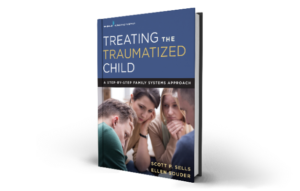Why is Nutrition Not Typically Part of Trauma Treatment?
Despite the advances of nutritional therapy over the last 30 years, there is often limited to no inclusion of nutrition as part of the trauma treatment for children and families with PTSD.
However, diet and nutrition can serve as powerful tools to influence change in both the body and brain of a child and/or family member experiencing trauma.
Why Nutrition and Trauma Matter:
THE TOP THREE REASONS
- In trauma treatment, a medicated brain change is tried first before attempting a nutritional brain change. In other words, therapists often move past nutrition and quickly on to psychotropic medications with the traumatized child.
- Based on neuroplasticity research, the brain is continually adapting and rewiring itself. Therefore, proper nutrition is a crucial ingredient to repair our neural pathways and heal the traumatized mind. Neurons that fire together, wire together.
- The trauma therapist is not expected to be a trained nutritionist but still can introduce and incorporate nutrition into treatment when needed or self-refer to a local nutritionist.
In his book, Mental Health for the Whole Child, Dr. Scott Shannon, a top child psychiatrist, concluded:
“We must try nutritional brain change first with a traumatized child before trying a medicated brain change.”
Case Example
Fifteen-year-old Travis came into treatment heavily medicated for both anxiety and depression. He experienced only mild improvement, which was compromised by the simultaneous onset of severe side effects, including dizziness, fatigue, dry mouth, and insomnia. The medication was regularly changed and dosages adjusted in a futile effort to reach some balance between benefits and side effects. Prior treatment did not include any nutritional analysis or consideration before medication.
After the nutritional balance was achieved through a change in diet, the turnaround was remarkable. Travis was able to be weaned off all psychotropics and had no further side effects. He was also clear and more workable in therapy because, as his mom stated, “He no longer had to work as hard to keep it all together.” Travis’s sleep became steady, and his mood became calm and peaceful.
Please Note: I am not disavowing the use of psychotropics on a case by case basis. These drugs are a quick pathway to symptom alleviation and can stabilize a patient. However, medication is often the first and only go to option while nutrition is overlooked. That is the problem in a nutshell.
The FST Nutritional Technique

The FST Family Systems Trauma model shows how to introduce nutrition as an integral part of trauma treatment.
See chapter 7 of Treating the Traumatized Child: A Step-by-Step Family Systems Approach for a detailed explanation of these steps as well as case studies and sample nutritional contracts.
Why a Nutritional and Trauma Introduction
The following statement is merely a suggestion of how you can introduce the value of nutrition into your overall treatment. You may adapt it accordingly:
The latest research shows a direct link between proper nutrition and its healing effects on the traumatized brain for both you and your child. However, every brain, just like every car, needs proper gasoline.
If you put diesel gasoline in a car that requires unleaded, the engine will break down. In the same way, if you feed your brain with processed sugar, bad carbs, and not enough water or vitamins, you can starve it to death.
Our brain needs the right “gasoline” to rewire itself properly. Therefore, before we move into rewiring through the use of what we call “wound playbooks,” we must first make sure you have the proper fuel to feed both your body and your brain. Let me pause here and ask each of you to comment on or ask questions about what I just said.
This introductory statement will elicit rich conversation and debate. It will range from wholehearted argument to denial or defensiveness. Since the typical diet is often high in sugar and saturated fats, children and teenagers, even sometimes parents, may vehemently resist such a change. When this happens, the FST therapist needs to consider what is called an FST Nutritional Playbook to jump start the process. The FST Nutritional Playbook is beyond the scope of this article but it is often used to show the family an example of how they would change the current nutritional habits of the family to heal trauma.
Therefore, keep in mind that family members may agree in theory, but when it comes to actual change—a battle between the therapist and family may ensue.
It is essential not to use the word “diet.” It has a very negative connotation today. Instead, use the phrase “nutritional plan.” This reframe is invaluable in getting the child or family system to accept change in this area.
Conclusion
Professionals who adopt the FST| Family Systems Trauma Model and its nutritional technique will see considerable changes in the child or family member who is traumatized. The use of drug therapy can be helpful because it can quickly alleviate the child’s traumatic symptoms (i.e., depression or anxiety) and provide an immediate break for the overwhelmed parent.
But psychotropic drugs only treat the symptoms of the trauma. Furthermore, using medication without nutrition can delay treatment of the root causes of the child’s trauma.
Better nutrition will rewire the child’s traumatized brain. And, in turn, the child will be more workable in treatment and able to receive new information and ideas to change. We all have experienced the differences in the way we look, feel, and sleep with a balanced diet of fruits and vegetables vs. one with high sugars and carbs.
A Success Path to Become a Family Trauma Expert
If you want to learn about an intensive application of this technique and others, register for the next monthly webinar at www.familytrauma.com or join our FST Advanced Training Course. Offered twice a year, this self-paced course teaches professionals the 12 Core Techniques of the FST model.
About the Author
Scott P. Sells, Ph.D., MSW, LCSW, LMFT, is the author of three books, Treating the Tough Adolescent: A Family-Based, Step-by-Step Guide (1998), Parenting Your Out-of-Control Teenager: 7 Steps to Reestablish Authority and Reclaim Love (2001), and Treating the Traumatized Child: A Step-by-Step Family Systems Approach (2017). He can be contacted at info@familytrauma.com or through LinkedIn and Facebook.


In order to read this article I had to sign up again for news.
Hi, Mason, thanks for reading the article. For future reference, all article content on this site is public. Feel free to visit anytime – no need to re-subscribe to the email list.
Ozempic: A Game-Changer Weight Loss
Hello readers! When diving into strategies for diabetes control, you’ve likely encountered Ozempic. This innovative drug has gained traction for its effectiveness to help users shed pounds. Today, we’ll break down what makes this med so popular and point you to a valuable resource for practical tips.
Semaglutide, a prescription medication, works by emulating a hormone that regulates appetite. Patients often report feeling fuller throughout the day, which can drive impressive blood sugar improvements. Clinical studies show stable glucose levels for some users, making it a top choice for diabetes patients. However, like any medication, it comes with things to know, like nausea, so learning the details is essential.
To those considering Ozempic, finding trustworthy resources is critical. This is where a awesome blog comes in: visit OzempicBlog.Space for practical insights on side effects. It provides expert advice to guide your journey Ozempic.
For those curious about Ozempic, knowing its benefits can inspire you to make informed decisions. With success stories to handling side effects, the right resources changes the game. Keep learning and here’s to on your health journey!|Share your stories in the community! Cheers!
Professional movers in New York City — Mini Moving NY. Fast apartment relocations with flexible scheduling.
Our Services:
1) Apartment Moving — small apartment relocations in Bronx; fast delivery
2) Small Moves — few items only; ideal for downsizing
3) Same Day Moving — urgent relocations; quick response time
4) Office Moving — business moves; professional service
5) Furniture Moving — single item delivery; beds
6) Local Moving — short distance; any NYC location
7) Storage Services — temporary storage solutions; 24/7 access available
Our Advantages:
• Competitive pricing — no hidden fees
• Quick turnaround — same-day moves available
• Professional team — trained staff
• 7 days a week — evenings & weekends
• Careful handling — furniture protection
• All boroughs coverage — Staten Island
Easy Booking Process:
— Call or text us > receive free estimate > schedule your move > stress-free moving
— Book on website > cash, card, Venmo accepted
— Customer support for questions
Affordable Rates:
• Flat rate options — competitive pricing
• No minimum hours for small moves
• Student discounts — save on your move
• No obligation estimate — contact us for personalized pricing
Where We Operate:
• Manhattan
• Every borough
• New Jersey — additional service areas
Moving Tips:
• Book early for best rates
• Loading dock access — no problem
• Packing materials available — purchase or rent
• Fully bonded — your belongings protected
Website: https://mini-moving-ny.com/
Mini Moving NY — fast moving solutions for last-minute relocations in all 5 boroughs.
For the past few weeks I’ve been trying out a few new online gaming places for a while, and one that caught my attention was Playamo-online.casino.
The site is well-designed, runs fast on both PC and mobile version, and the initial promotions are quite good compared to typical casino bonuses.
I’ve withdrawn some money already, without issues — transactions went through in no time.
If you’re into slots or live dealer games, I totally recommend it.
Recently I’ve been reviewing a few fresh betting websites recently, and one that grabbed my attention is Playamo Casino.
This platform feels professional, operates efficiently on both browser version and portable device, and the signup rewards are amazing compared to many online casinos these days.
I’ve already made some withdrawals, smoothly — payouts were super fast and easy.
If you like spinning reels or live play, you won’t regret trying it.
gyn101.com
New leaks every day! https://nnleaks.top/
https://orb11ta.asia/ – NEW WEBSITE HERE!!! orb11ta online
Thank you…
https://hop.cx
Содействуем сформулировать тему, поставить цели и задачи, собрать логический план, собрать литературу, спланировать исследование. заказать работу для лмс синергия
Томск взрослые
Thank you:)
https://www.youtube.com/@SupremeAudiobooks